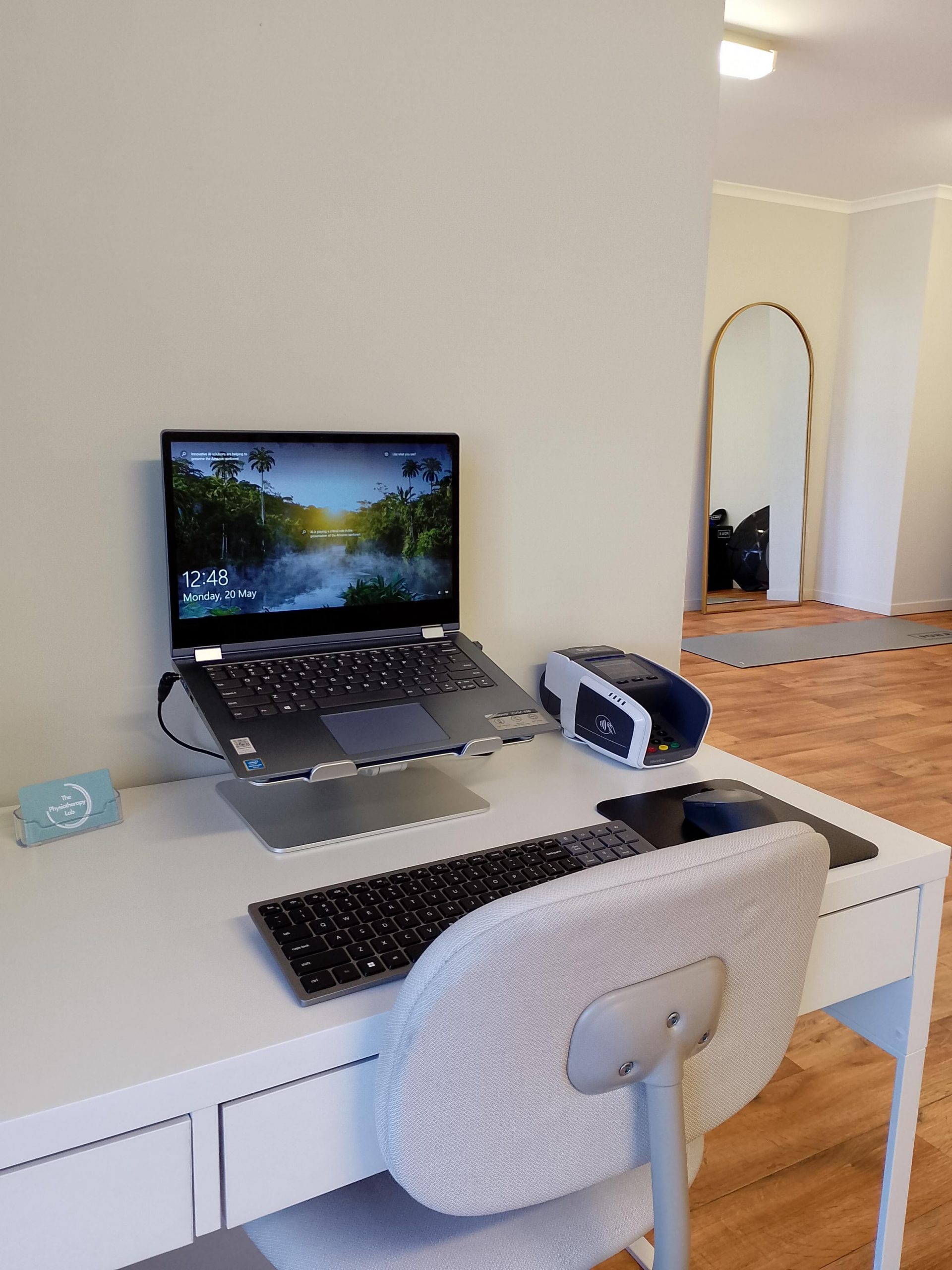Optimise Your Workday: The Role of Physiotherapy and Ergonomics in a Healthy Workspace

In today’s digital age, many of us spend a significant portion of our day seated at a desk, typing away on a computer. While this may be necessary for our work, it can also lead to a host of musculoskeletal issues if our workspace isn’t set up properly. Poor ergonomics can result in neck pain, back pain, carpal tunnel syndrome, and other repetitive strain injuries. At The Physiotherapy Lab, we understand the importance of creating a healthy workspace and the role physiotherapy plays in preventing and treating these common issues.
What is Ergonomics?
Ergonomics is the science of designing the workplace, keeping in mind the capabilities and limitations of the human body. An ergonomic workspace aims to optimise comfort and efficiency, reducing the risk of injury and enhancing productivity. It involves arranging the workspace in a way that promotes good posture, reduces strain, and supports the body’s natural movements.
The Impact of Poor Ergonomics
Spending long hours in a poorly designed workspace can lead to a variety of health problems, including:
- Neck and Shoulder Pain: Often caused by a monitor that is too high or too low.
- Back Pain: Resulting from improper chair support or sitting posture.
- Wrist and Hand Issues: Including carpal tunnel syndrome from an awkward keyboard or mouse position.
- Eye Strain: Due to poor lighting or screen glare.
How Physiotherapy Can Help
Physiotherapy can play a crucial role in both preventing and treating the injuries associated with poor ergonomics. Here’s how:
- Assessment and Diagnosis:
A physiotherapist can assess your current workspace setup and identify any ergonomic issues that may be contributing to your discomfort or pain. They can diagnose musculoskeletal problems that result from poor ergonomics. - Personalized Recommendations:
Based on the assessment, physiotherapists can provide personalised advice on how to adjust your workspace. This might include recommendations on chair height, desk setup, monitor position, and keyboard placement to ensure a more ergonomic setup. - Exercise and Stretching Programs:
Physiotherapists can design specific exercise and stretching programs to strengthen muscles, improve posture, and alleviate pain. Regular breaks to perform these exercises can significantly reduce the risk of repetitive strain injuries. - Manual Therapy:
For those already experiencing pain or discomfort, physiotherapists can use manual therapy techniques to relieve tension, improve mobility, and reduce pain. - Education and Training:
Educating employees about the importance of ergonomics and proper posture can empower them to make positive changes in their workspace and daily routines.
Tips for Creating an Ergonomic Workspace
Here are some practical tips to help you set up an ergonomic workspace:
- Chair: Choose a chair with good lumbar support. Adjust the height so your feet are flat on the floor, your knees are at a 90-degree angle and your hips are sitting at around a 100 degree angle. Ensure you can fit two fingers in-between the back of your knees and the front of the chair, you do not want the back of your knees compressed against the chair.
- Foot Rest: If you are unable to position your feet flat on the floor, use a foot rest to ensure your feet are supported.
- Desk: Ensure your desk height allows your elbows to be at a 90-degree angle when typing and your shoulders are relaxed.
- Screen: Position your screen at eye level or slightly below and about an arm’s length away.
- Over 1 monitor: Sit facing straight on to the monitor in which you use more frequently. If your monitor use is equal, place yourself in the middle of your monitors and use your chair to turn your body when working on each monitor.
- Keyboard and Mouse: Keep your keyboard and mouse at the same level and as close as comfortably to yourself. Use a wrist rest if necessary and put the feet of the keyboard in the flat position.
- Lighting: Ensure your workspace is well-lit to reduce eye strain. Position your monitor to minimise glare from lights or windows.
- Phone: If a landline place within arms reach. If you use the phone regularly, it is best to use a headset.
- Take Breaks: Stand up, stretch, and move around every 30minutes to prevent stiffness and promote circulation.
Conclusion
Creating a healthier workspace through proper ergonomics is essential for preventing injury and maintaining productivity. At The Physiotherapy Lab, we are dedicated to helping you achieve a comfortable and efficient work environment. If you’re experiencing pain or discomfort related to your workspace, don’t hesitate to contact us at [email protected] or 0477869304 Our expert physiotherapist can provide you with the tools and techniques to enhance your workspace and improve your overall well-being.
